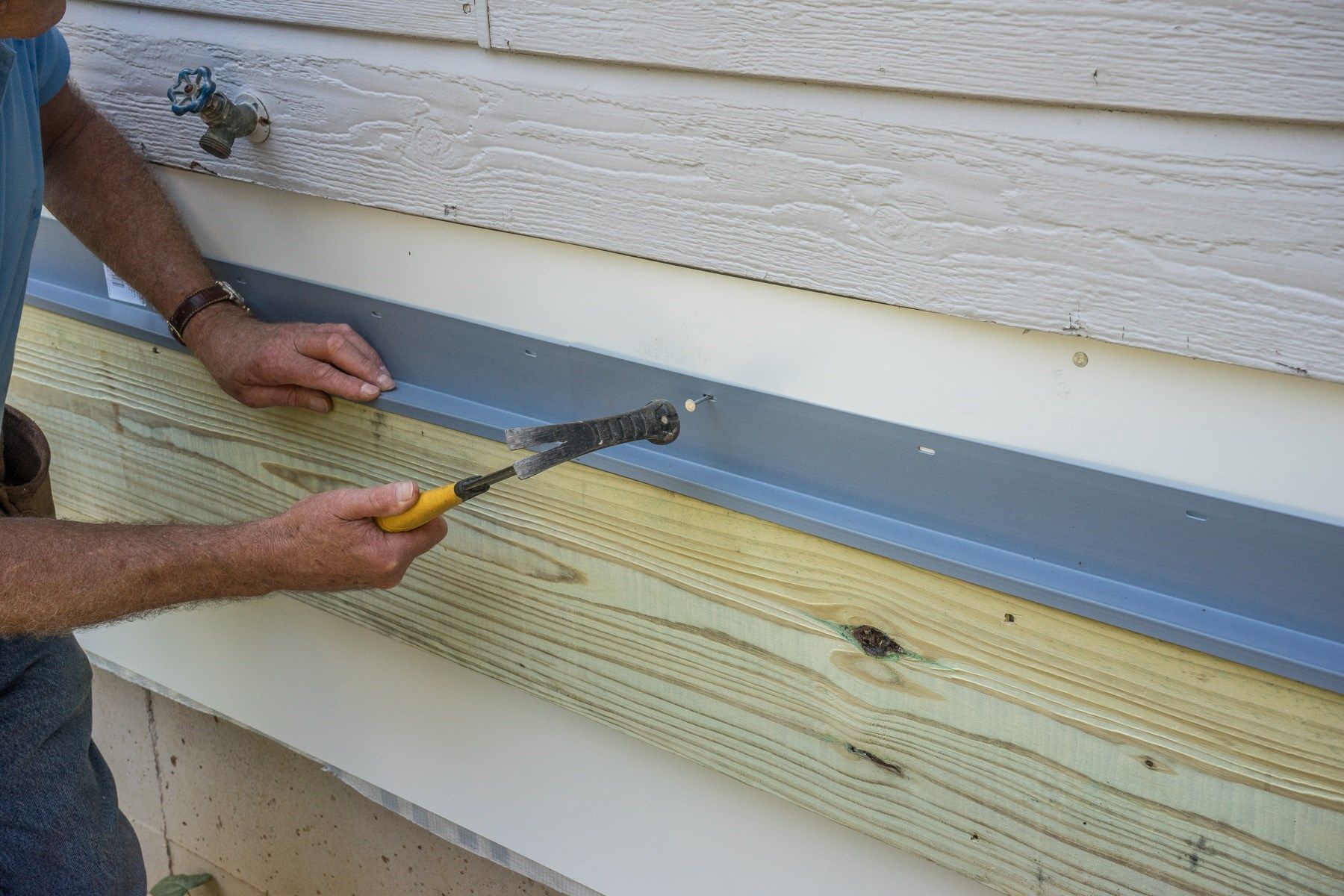How To Install Duraflash Vinyl Deck Flashing Under Door
If you cut out your siding to install a ledger board, careful steps must be taken to ensure that moisture cannot reach your house. Infiltrating rainwater can travel downward, sideways, and even a bit upward, so special flashings must be used. In the past, metal flashing and extra layers of roofing felt (tar paper) were often used, but nowadays vinyl “Z” flashing and rolls of vinyl back flashing do a better job. Ideally, the house’s sheathing should be triple protected from moisture: with building paper or roofing felt stapled to the sheathing; then with back flashing; and then the Z flashing, which also protects the ledger itself. The flashing configuration shown in this article is quite common. However, your codes may call for other methods, so check with your building department before you start work.

How can I join vinyl decking to metal door. Has left me with a vinyl deck that allows water. Put a proper piece of flashing under the door frame and.
For instance, some inspectors may prefer self-adhering flashing (which is much the same as self-stick ice and water shield often used at roof eaves) instead of vinyl back flashing. Slip the siding up and around the door Slip the back flashing under the siding at least 3 inches at the top and the sides. You may need to pry out siding first. If nails are in the way, pull them out.
Vinyl Flashing
(Pry the siding out near a nail, then push the pry bar against the nail as you partially tap the siding back in. That should pop the nail head out far enough so you can pry it out.) Take care not to tear the building paper or tar paper while you do this. Attach the back flashing with as few nails as necessary to keep it lying flat. TIP At this point you will need to go to to cut and attach the ledger. Then come back and install the z flashing.